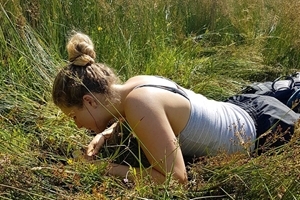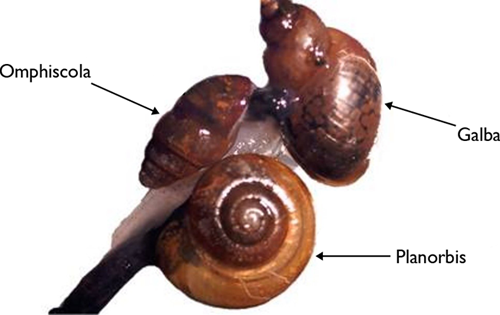 Mud snails are potential intermediate hosts for the sheep liver fluke, Fasciola hepatica, which can be very debilitating in sheep. There are many species of mud snails, which is the generic term for the many tiny snails that frequent damp, relatively open habitats.
Mud snails are potential intermediate hosts for the sheep liver fluke, Fasciola hepatica, which can be very debilitating in sheep. There are many species of mud snails, which is the generic term for the many tiny snails that frequent damp, relatively open habitats.
At Auchnerran, some fluke monitoring in the sheep flock was carried out by Elanco in 2016/17, and we began mud snail monitoring in August 2017, initially as part of the JHI liming trials but then across the whole farm wherever there are major wetland areas. We have been greatly assisted in this by the Moredun Research Institute (MRI): their experts have trained our staff in survey techniques and basic identification, and our mud snail samples are sent to MRI for identification (much of which can only be accurately done via genetic analysis), along with faecal samples from two fields from both sheep and rabbits.
Mud snails are not easy to find as they are only a few millimetres in length and can inhabit quite small patches of open mud in otherwise thickly vegetated wet ground, so there is no alternative but to get down on your hands and knees and move through the sample areas millimetre by millimetre. Any snails found are kept for further identification and analysis to look for fluke infections.
The autumn 2017 mud snail surveys at GWSDF found a total of 462 snails, of six species or groups, across a total of 15 locations. Fasciola hepatica was only found in one species of mud snail: Galba truncatula. A total of 215 G. truncatula were found, with six (2.8%) individuals infected.

© Gillian Mitchell/Moredun Research Institute